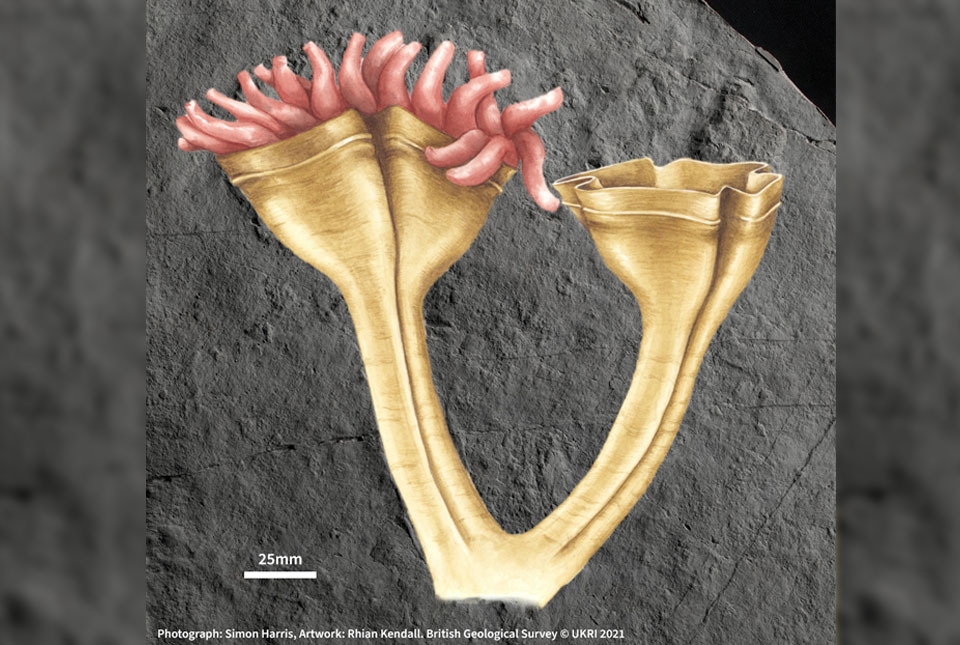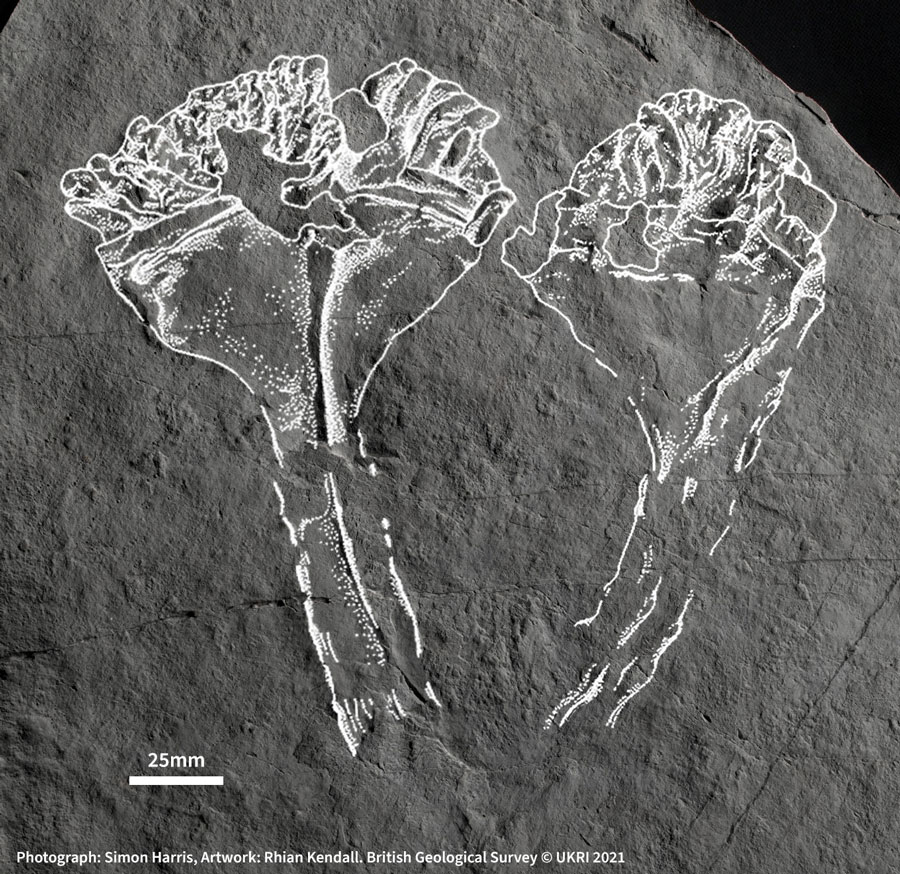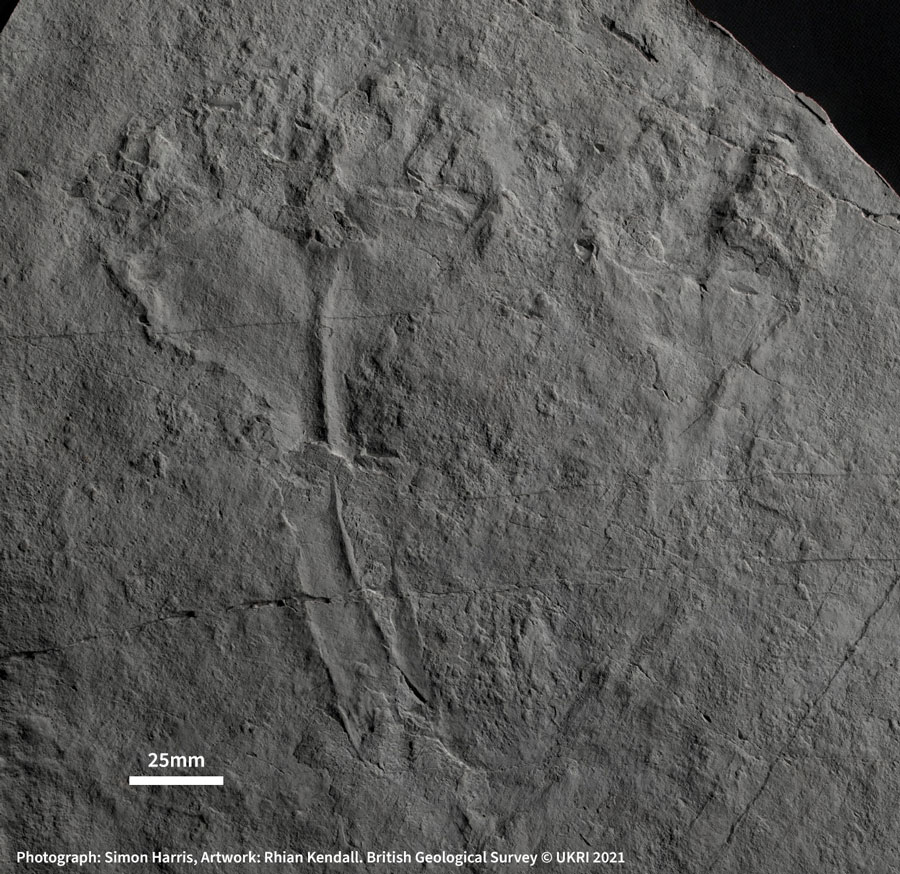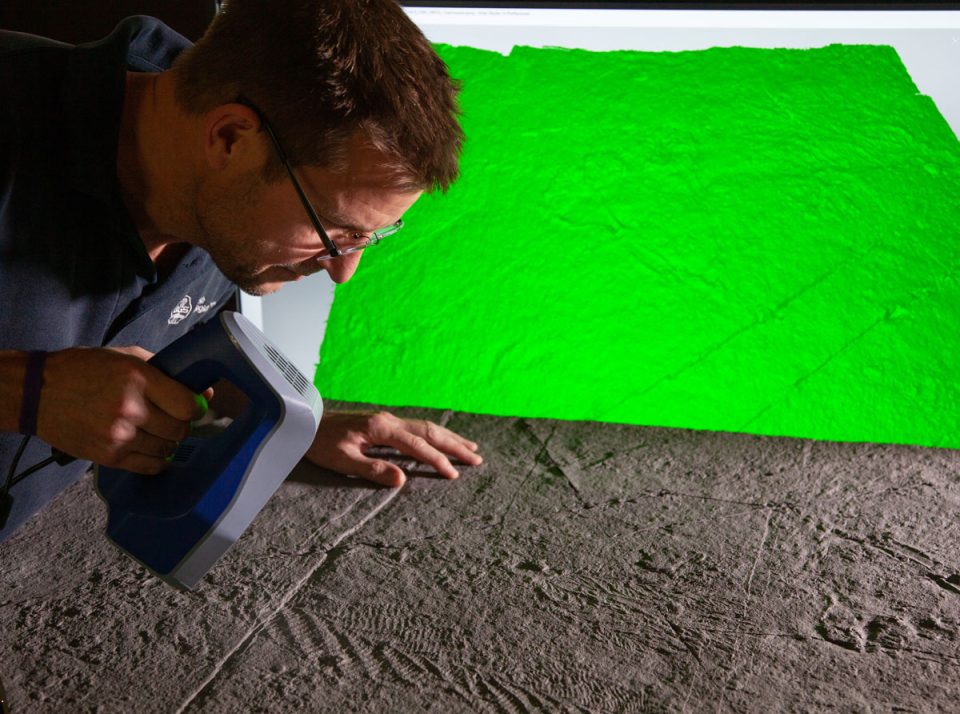The specimen is the first of its kind to be found and is related to the group that includes modern corals, jellyfish and anemones.

Artist’s impression of the new fossil.
Geologists have found the fossil of the earliest known animal predator. The 560-million-year-old specimen is the first of its kind, but it is related to the group that includes corals, jellyfish and anemones living on the planet today.
The palaeontologists who discovered it have named it ‘Auroralumina attenboroughii‘ in honour of Sir David Attenborough. The first part of its name is Latin for ‘dawn lantern’, in recognition of its great age and resemblance to a burning torch.
It was found in Charnwood Forest, near Leicester in England, which is famous for its fossils. In 1957, a fern-like impression in stone turned out to be one of the oldest fossilised animals, Charnia masoni.
Sir David Attenborough ‘truly delighted’ with his new namesake
When I was at school in Leicester I was an ardent fossil hunter. The rocks in which Auroralumina has now been discovered were then considered to be so ancient that they dated from long before life began on the planet. So I never looked for fossils there.
A few years later a boy from my school found one and proved the experts wrong. He was rewarded by his name being given to his discovery. Now I have — almost — caught up with him and I am truly delighted.
When did modern groups appear?
The discovery of Auroralumina, reported in Nature Ecology and Evolution, throws into question when modern groups of animals appeared on Earth. Dr Phil Wilby, palaeontology lead at BGS, is one of the scientists who made the find.
It’s generally held that modern animal groups like jellyfish appeared 540 million years ago, in the Cambrian Explosion, but this predator predates that by 20 million years.
It’s the earliest creature we know of to have a skeleton. So far we’ve only found one, but it’s massively exciting to know there must be others out there, holding the key to when complex life began on Earth.
When and where was it found?


Palaeontologists still flock to the forest to examine its Ediacaran Period fossils, aged between 635 and 538.8 million years. In 2007, Phil Wilby and others from BGS spent over a week cleaning a 100 m-square rock surface with toothbrushes and pressure jets. They took a rubber mould of the whole surface and captured the impression of over 1000 fossils — and one stood out from the crowd.
Dr Frankie Dunn from the Oxford University Museum of Natural History carried out the detailed study.
This is very different to the other fossils in Charnwood Forest and around the world.
Most other fossils from this time have extinct body plans and it’s not clear how they are related to living animals. This one clearly has a skeleton, with densely packed tentacles that would have waved around in the water capturing passing food, much like corals and sea anemones do today.
It’s nothing like anything else we’ve found in the fossil record at the time.
Dr Frankie Dunn, Oxford University Museum of Natural History.
Dunn calls the specimen a ‘lonely little fossil’ and thinks it originated from shallower water than the rest of the fossils found in Charnwood.
The ancient rocks in Charnwood closely resemble ones deposited in the deep ocean on the flanks of volcanic islands, much like at the base of Montserrat in the Caribbean today.
All of the fossils on the cleaned rock surface were anchored to the sea floor and were knocked over in the same direction by a deluge of volcanic ash sweeping down the submerged foot of the volcano, except one: A. attenboroughii.
It lies at an odd angle and has lost its base, so appears to have been swept down the slope in the deluge.
Dr Frankie Dunn.






